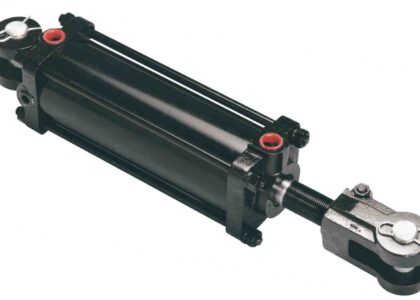Chassis dynamometers, often referred to as dyno for short, are the workhorses of the automotive industry, testing a vehicle’s performance and power output. As the automotive landscape undergoes a transformation, the chassis dynamometer market is poised for significant growth. Let’s delve into the key factors driving this market, explore exciting opportunities, and peer into its future scope.
Get Exclusive Sample Copy of the Report: https://www.futuremarketinsights.com/reports/sample/rep-gb-5766
Growth Factors: Putting the Pedal to the Metal
Several trends are accelerating the growth of the chassis dynamometer market:
- Rise of Electric Vehicles (EVs) and Hybrids: The growing popularity of EVs and hybrids necessitates the development and adoption of specialized dyno models capable of testing their unique powertrains and regenerative braking systems.
- Stringent Emission Regulations: Stricter emission regulations worldwide are prompting manufacturers to optimize engine performance and ensure vehicles comply with regulations. Chassis dynamometers play a crucial role in testing and development for emission control.
- Growing Demand for Performance Tuning: The ever-present enthusiast market for high-performance vehicles continues to drive demand for dynos used for performance testing, tuning, and engine modifications.
- Technological Advancements: Advancements in control systems, data acquisition capabilities, and software are leading to the development of more sophisticated and user-friendly chassis dynamometers.
- Focus on Aftermarket Applications: The rising popularity of car modifications and aftermarket parts creates a demand for dyno testing services offered by workshops and tuning specialists.
Opportunities: Shifting Gears for the Future
The chassis dynamometers market presents exciting opportunities that can propel it further:
- Development of Connected Dynos: Integration of internet connectivity and cloud-based data analysis can enable remote monitoring, data sharing, and performance comparisons across different vehicles.
- Focus on User-friendliness and Accessibility: Developing user-friendly dyno interfaces and offering dyno rental services can make this technology more accessible to a wider range of automotive enthusiasts and smaller workshops.
- Standardization and Certification: Standardization of testing procedures and dyno performance metrics can ensure data consistency and facilitate comparisons across different testing facilities.
- Expansion into Emerging Markets: The growing automotive industries in developing regions present an opportunity for increased adoption of chassis dynamometers as these markets prioritize vehicle testing and development.
- Focus on Multi-functionality: Developing dyno models with additional functionalities like wheel alignment testing or diagnostic capabilities can offer greater value to workshops and testing facilities.
Future Scope: A Road Less Traveled
The future of the chassis dynamometer market is expected to witness advancements in several areas:
-
- Rise of Virtual Dyno Testing: Advancements in simulation technology could lead to the emergence of virtual dyno testing solutions that complement traditional dyno testing methods.
- Integration with Advanced Driver-Assistance Systems (ADAS): Future dynos might integrate with ADAS testing functionalities, allowing for comprehensive vehicle performance evaluation.
- Focus on Sustainability: The development of dyno models with lower energy consumption and more sustainable operation practices can contribute to a greener testing environment.
- Rise of Autonomous Dyno Testing: Advancements in automation could lead to the development of autonomous dyno testing systems, increasing efficiency and reducing human error during testing procedures.
Read more info: https://www.futuremarketinsights.com/reports/chassis-dynamometers-market



